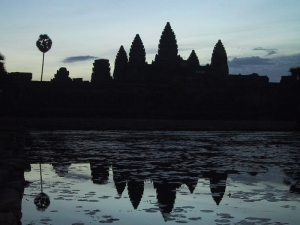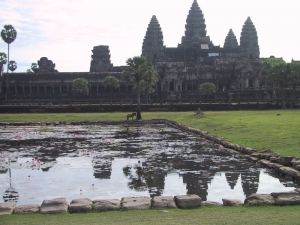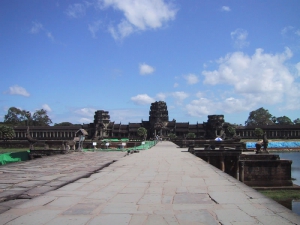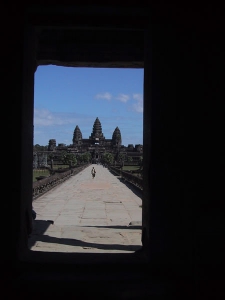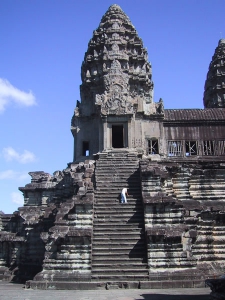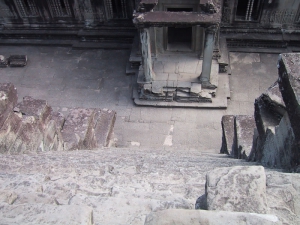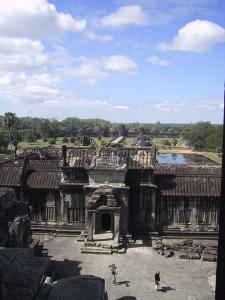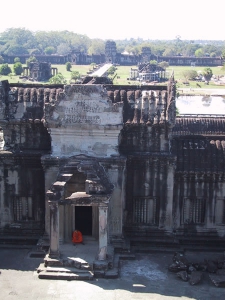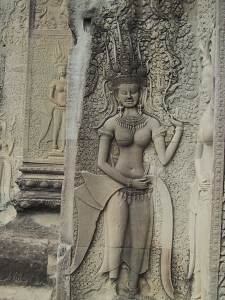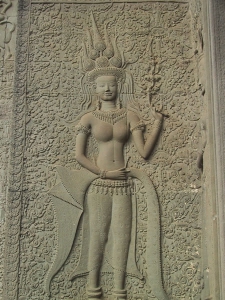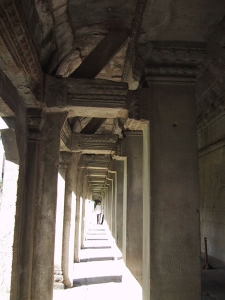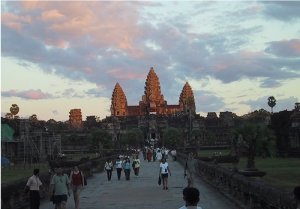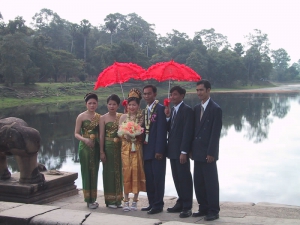Angkor Wat is the world’s largest religious monument, measuring one and a half kilometers by 1.3 kilometers (200 hectares). Built by the great Khmer emperor Suryavarman II, in the early 12th century (1113-1150), it symbolizes the entire Hindu universe: the moat represents the oceans surrounding the earth, the concentric galleries represent the mountain ranges surrounding Mount Meru, the home of the gods, and the five towers represent the five peaks of Mount Meru.
Angkor Wat is also the only building to appear on a flag–the Cambodian flag features the triple towers of Angkor Wat, and every Cambodian government (or rebel group) has featured it on their version of the flag. Understandably–it’s quite impressive.
Photos don’t really do Angkor Wat justice, any more than Ansel Adams can prepare you for the sight of Yosemite’s Half-Dome; the scale just isn’t comprehensible from a single small picture. You have to stand there on the causeway, looking down the immense moat, and then at the enormous gates of Angkor, to truly appreciate its size.
The remarkable part about Angkor Wat is that despite its enormous size, virtually every inch of it is covered in detailed stonecarvings; so the scale goes from the gigantic to the very tiny. This is why it’s generally considered one of the Seven (surviving) Wonders of the world.
Despite its immensity, in my opinion Angkor Wat hasn’t got much ambiance; it’s hard to, with throngs of tourists overrunning it. I liked Ta Prohm and some of the remoter temples better. If you go, I would suggest going near the beginning or end of the tourist season, not near Christmas.
Because of the detailed scale, the thumbnails are almost unrecognizable; do look at the larger photos!
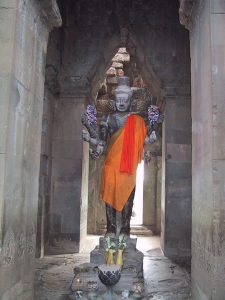 A statue of Vishnu, located to the right of the main entrance. It's generally believed that this statue originally stood in the central shrine of Angkor (there's a Buddha there now). Angkor Wat was originally built as a Hindu shrine, but has been rededicated many times depending on the dominant religion of the time.
A statue of Vishnu, located to the right of the main entrance. It's generally believed that this statue originally stood in the central shrine of Angkor (there's a Buddha there now). Angkor Wat was originally built as a Hindu shrine, but has been rededicated many times depending on the dominant religion of the time.
